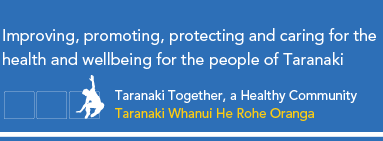Draft reports indicate Taranaki Base Hospital may have earthquake prone buildings
25 September 2018
Taranaki DHB confirmed this morning that in May 2018, the structural seismic performance of the DHB’s priority buildings at its Taranaki Base Hospital campus were reviewed by three expert engineering firms. The draft reports, completed from July, are currently under peer review.
Rosemary Clements, Taranaki DHB Chief Executive said, “Some of the reports under peer review indicate that Taranaki Base Hospital has some provisionally ‘earthquake prone’ buildings. These include a total of four hospital clinical buildings, one office building and three underground tunnels that provide utility services across the hospital campus.”
If a building has been identified as Earthquake Prone it means the building is more likely to sustain damage following a moderate earthquake and as a result, there would be a higher risk to staff and public safety.
“We know this news could be concerning to our staff, patients and the community but I want to reassure them there is no cause for alarm. As always, the safety of our staff and patients is our priority, as is maintaining our hospital’s clinical and acute services.”
Any risks associated with the DHB’s Earthquake Prone Buildings (EPBs) are being proactively monitored and managed and Project Management Consultants, RCP are helping Taranaki DHB develop a seismic risk management plan.
Mrs Clements said, “It’s important to remember that the buildings themselves have not changed – they are still the same buildings that have been there for decades. In 2011 seismic structural assessments of these buildings did not identify any EPBs.”
“What has changed significantly since then are the building standards for new buildings against which the DHB buildings have been assessed, as well as the soil categorisation in New Plymouth,” she added.
In 2017 the Earthquake Prone Building Amendment Act was introduced and in the same year, a change in soil risk categorisation and rating saw the New Plymouth city area be downgraded from a Category C (shallow soil) to a Category D (deep or soft soil) and these were used when the hospitals buildings were assessed.
Mrs Clements explained, “Hospital buildings are ‘priority buildings’ which means they are held to a higher standard than commercial or residential buildings because of their role in emergency support after a major disaster. This means that the DHB must address the earthquake prone buildings in 12 and a half years as opposed to the 25 years required if they were non-priority buildings. The good news for the Taranaki Community is that Taranaki DHB is acting much faster than this.”
“In April 2016 we started planning and preparing a business case for building Project Maunga, phase two of the hospital redevelopment, and as a part of this planning we commissioned the review of the seismic performance of our priority buildings. We have been working closely with the Ministry of Health and Treasury to ensure they are aware of this preliminary assessment and we were pleased to host the Capital Investment Committee last week which included a tour of the buildings,” said Mrs Clements.
“Despite some of Taranaki DHB’s hospital buildings being found to be earthquake-prone, it doesn’t mean they are unable to be occupied,” she added.
In the short term the DHB will be working with expert structural engineers and project managers to prepare seismic risk management plans for each building. These will identify reasonable interim or remedial works options that can be undertaken over the next few months.”
“Multiple other DHBs have already identified earthquake prone buildings on their campus’ and we are utilising their experience, information sources and expert technical advisors to help develop our own local Seismic Risk Management plan,” said Mrs Clements.
Acute hospital buildings with emergency facilities are required to meet a high earthquake rating, Importance Level 4 (IL4). This means the building needs to be able to withstand a one in 2,500 year earthquake, and to be operational within hours of a one in 500 earthquake. Commercial and residential buildings are rated Importance Level 2 (IL2) in comparison.
Taranaki is a medium risk zone for earthquakes compared to other parts of the country such as Wellington, Christchurch, Hawkes Bay and Palmerston North which are categorised as a high risk zones for earthquakes.
GNS Science calculates the annual likelihood of a magnitude 6.0 earthquake (large enough to damage buildings and move furniture) to be 5% in South Taranaki and 3% in north Taranaki. Around 200-300 earthquakes are recorded each year in Taranaki, up to ten of those might be large enough to be felt by residents.
New Plymouth District Council are aware of the DHB’s provisionally earthquake prone buildings but will be officially notified once the final reports are confirmed. The DHB anticipates that signage will then be placed on the relevant buildings in accordance with the legislation.
Taranaki DHB staff were briefed from 9am this morning on the situation and support for staff who think they might need it has been made available. Patients have also been informed from 3pm this afternoon. Workshops held by expert engineers are also scheduled in the next week for staff to ask any questions they may have.
For more information and regular updates people should visit www.tdhb.org.nz
Ends
For more information please contact:
Cressida Gates-Thompson, Communications Manager, 027 703 6177
Last updated: Tuesday, September 25, 2018


